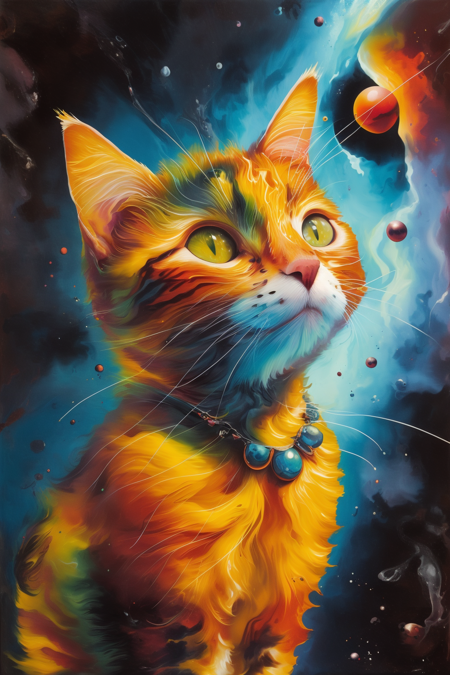Type | |
Stats | 363 94 |
Reviews | (56) |
Published | May 31, 2024 |
Base Model | |
Trigger Words | style of Qi Baishi |
Hash | AutoV2 9BDBDC0200 |
style of Qi Baishi
Qi Baishi, also known as Qi Huang, was a renowned Chinese painter born on January 1, 1864, in Xiangtan, Hunan Province, China. He is considered one of the most significant artists of modern Chinese painting.
Qi Baishi began his artistic education at a young age, studying traditional Chinese painting techniques. However, he later developed a unique style that combined traditional techniques with a modern sensibility. His paintings often featured subjects from nature, such as flowers, birds, insects, and landscapes. He had a remarkable ability to capture the essence and spirit of his subjects with simple brushstrokes and vibrant colors.
One of Qi Baishi's notable contributions to Chinese painting was his innovative use of texture and brushwork. He employed a variety of techniques, such as "boneless" painting, which involved using a soft brush to create flowing lines and delicate details. His mastery of brushwork allowed him to create dynamic and expressive compositions.
Qi Baishi's artistry extended beyond painting. He was also skilled in seal carving, calligraphy, and poetry. His calligraphy was highly admired for its fluidity and elegance, while his poetry reflected his deep connection with nature and his philosophical insights.
Qi Baishi's popularity and influence grew throughout his career, and he received numerous accolades and awards for his artistic achievements. His paintings are highly sought after by collectors and have fetched record prices at auctions.
Qi Baishi's artistic legacy lies in his ability to bridge tradition and innovation, infusing his works with a sense of vitality and modernity. His paintings continue to inspire artists and art enthusiasts around the world, making him one of the most celebrated figures in the history of Chinese art.
齐白石,又名齐璜,是中国著名画家,出生于1864年1月1日,中国湖南省湘潭市。他被认为是现代中国绘画中最重要的艺术家之一。
齐白石在年幼时开始接受艺术教育,学习传统中国绘画技巧。然而,他后来发展出一种独特的风格,将传统技法与现代感融合在一起。他的作品常常以自然界的主题为特色,如花卉、鸟类、昆虫和山水。他以简练的笔触和鲜艳的色彩捕捉到了作品主题的本质和灵魂。
齐白石在中国绘画中的一个显著贡献是他对质感和笔法的创新运用。他运用各种技巧,如“无骨”绘画,使用柔软的笔刷来创造流动的线条和精细的细节。他对笔法的精湛掌握使他能够创作出富有动态和表现力的构图。
齐白石的艺术才华不仅限于绘画。他还擅长篆刻、书法和诗歌。他的书法因其流畅和优雅而备受赞赏,而他的诗歌则反映出他与自然的深厚联系和哲学见解。
齐白石的声望和影响力在他的职业生涯中不断增长,他因其艺术成就而获得了许多荣誉和奖项。他的绘画作品备受收藏家追捧,并在拍卖会上创下了高价纪录。
齐白石的艺术遗产在于他能够将传统与创新相结合,赋予作品活力和现代感。他的画作继续激发着世界各地的艺术家和艺术爱好者,使他成为中国艺术史上最受赞誉的人物之一。


